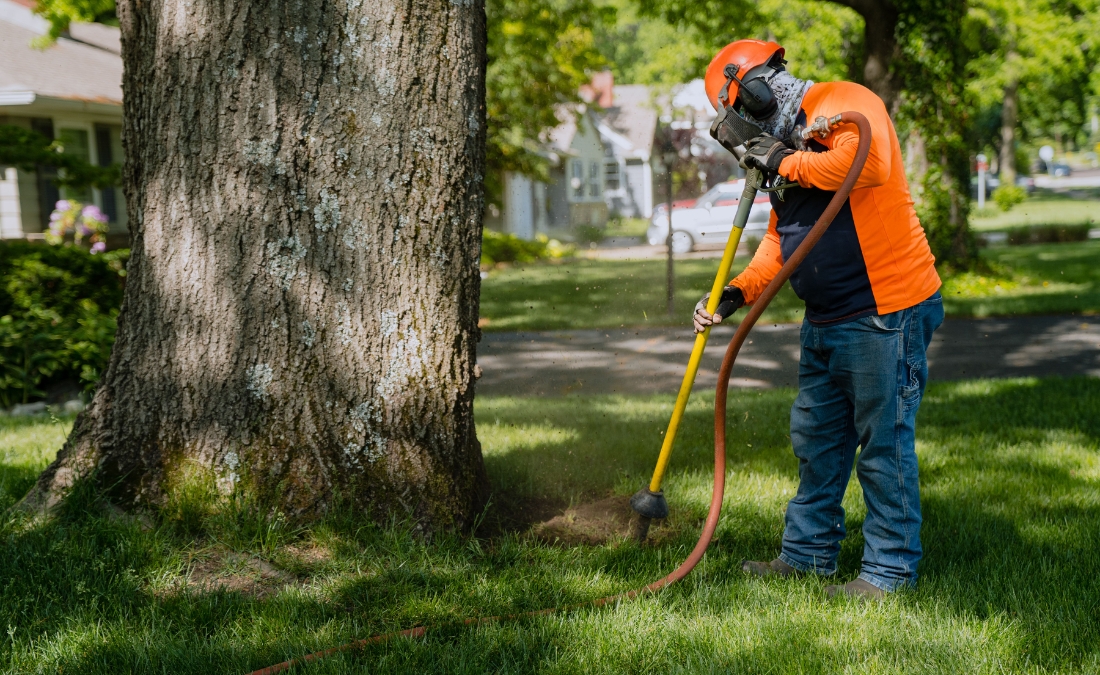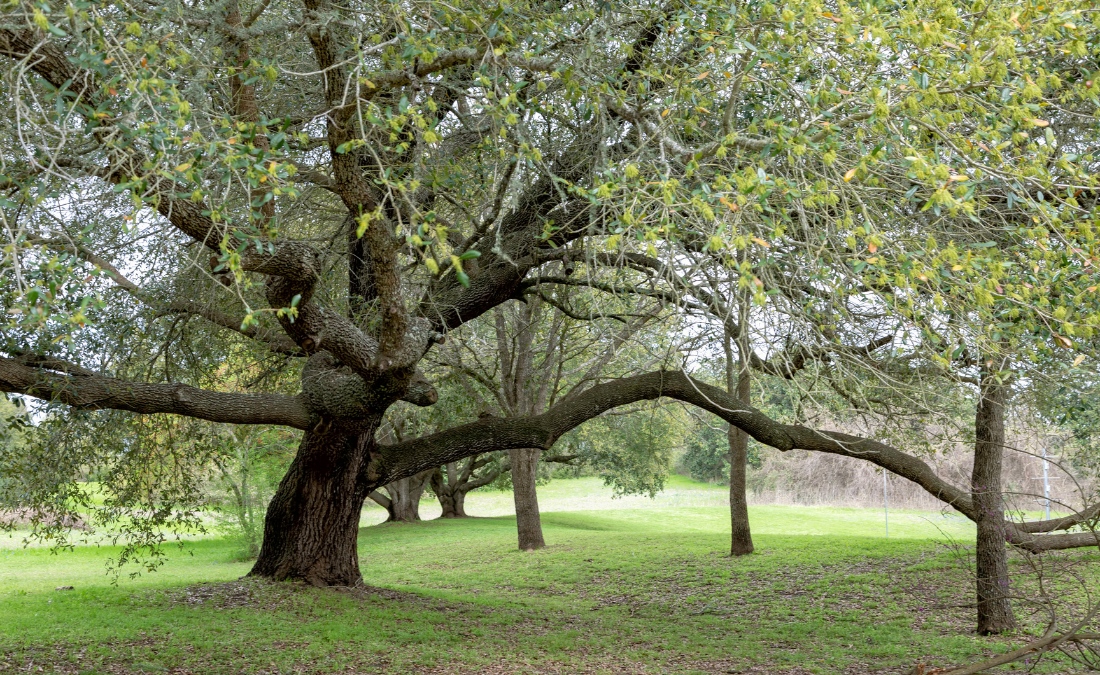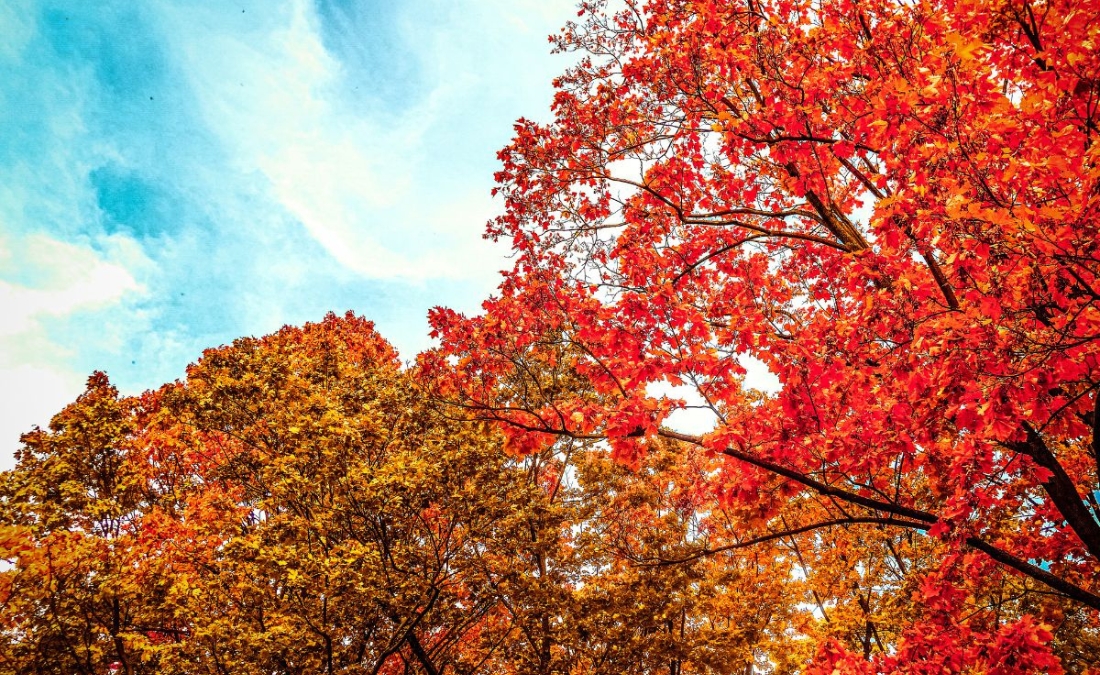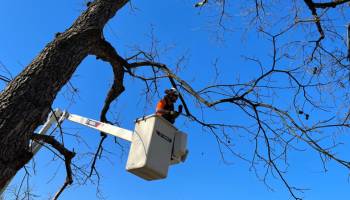Avoiding Crape Murder: The Right Way to Care for Crape Myrtles in Forth Worth
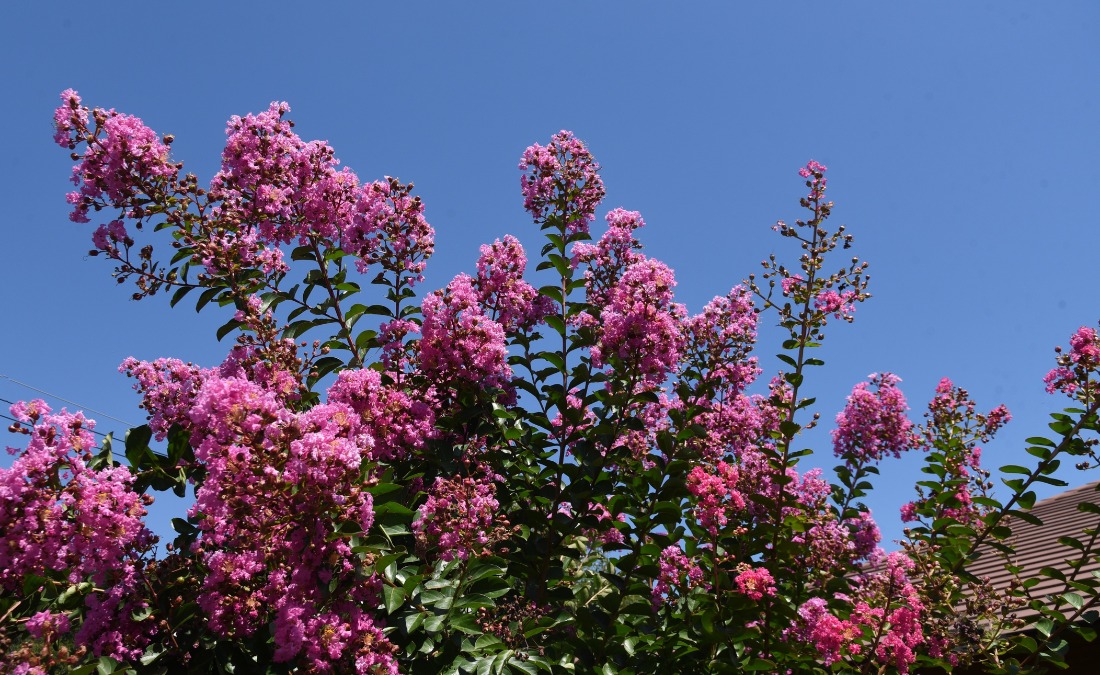
Stop crape murder in Fort Worth! Get expert tips from our arborists on how to properly prune, fertilize, and care for your crape myrtles year-round.
Crape myrtles are beautiful trees. A symbol of the American South, they are widespread in our area and a popular ornamental tree choice for homeowners and businesses throughout Fort Worth.
Despite their ubiquity, many people who own these trees fail to provide the proper care for them, and as a result, often end up killing them despite their good intentions. Learn how to care for your crape myrtles the right way – with expert tips from Fort Worth tree care professionals who know how to keep them healthy and thriving year after year.
Key Takeaways
- Plant crape myrtles in full sunlight (at least 6 hours daily) with well-drained soil and choose a variety that suits your space.
- Avoid “crape murder” by keeping pruning very light and only trimming in late winter/early spring to maintain the tree’s natural shape and prevent weak water sprouts.
- Water your crape myrtles during dry spells and apply 2-4 inches of mulch around the drip line to reduce stress and improve soil conditions.
- Have a professional inspect for crape myrtle bark scale (CMBS) and treat in March when the insects are vulnerable, while also maintaining good cultural practices.
- Fertilize in the fall after professional soil testing and protect trunks with burlap wrapping in winter to prevent frost cracks that often occur due to temperature fluctuations.
Why Growing Crape Myrtles in Fort Worth Takes Extra Care
While Fort Worth may be a great place to live for people, it can be a bit more difficult for the trees we plant. Some of the difficulties that crape myrtles face in our area include:
- Fluctuating Temperatures: Fort Worth temperatures can vary wildly by season, with extreme highs reaching at or over 100 degrees and down to near or below zero. The drastic shift of temperature can lead to stressed trees.
- Soil Conditions: Much of our soil is of a heavy clay composition, making it difficult for tree roots to fully expand. Clay soil can also quickly become compacted, making it difficult for roots to find nutrients and water.
- Drought: Droughts and dry periods are a nearly annual occurrence in Fort Worth. Without adequate water, trees will become stressed and fail to grow.
These environmental challenges can weaken or even kill a crape myrtle over time, which makes proper care essential for Fort Worth homeowners.
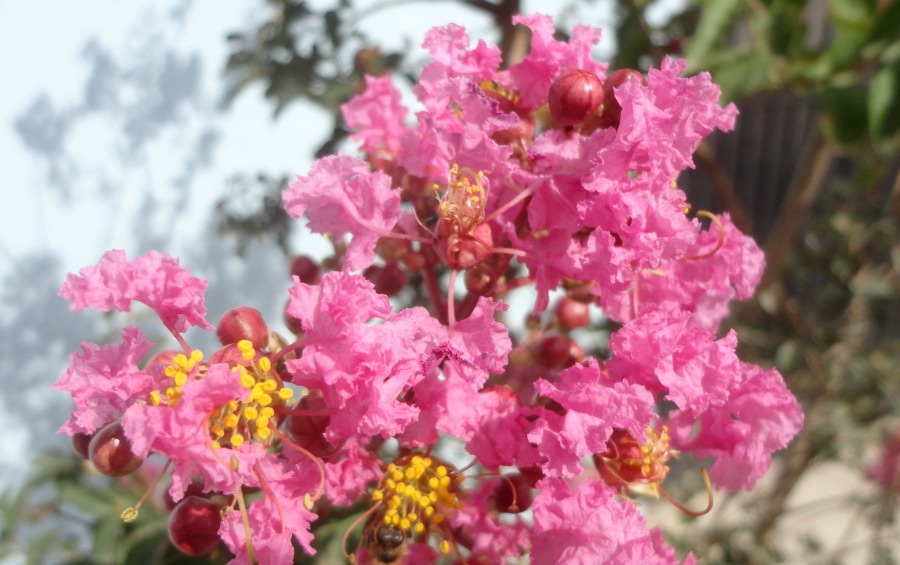
The flowers of a crape myrtle tree in Grand Prairie, TX. Photo courtesy of Juan Carlos Fonseca Mata, CC BY-SA 4.0, via Wikimedia Commons
How to Care for Crape Myrtles in Fort Worth
Crape myrtles (Lagerstroemia indica) are beautiful, low-maintenance trees – but only if they’re planted in the right spot and cared for properly. Unfortunately, there’s a lot of conflicting advice out there about how to grow them, especially in a climate as challenging as Fort Worth’s.
To help you avoid the most common mistakes and keep your crape myrtles healthy year-round, here are our top care tips for success.
Plant it Properly and in the Right Place
The first step to a healthy crape myrtle is to plant it in the right place. These trees thrive best with full sunlight each day (at least 6 hours). So, when choosing a planting location, ensure it won’t spend too much time in the shade from nearby mature trees or buildings.
Regarding soil preferences, they can handle alkaline or acidic soil, and prefer moist, well-drained soil.
When you plant a new crape myrtle on your property, always follow the standard procedures for tree planting. Some tips include:
- Select a cultivar that suits your space requirements and won’t outgrow the area.
- Plant the tree in fall after the leaves drop from the tree or in the spring before the buds break.
- Dig the hole as deep as the sapling’s rootball and at least twice as wide.
- Pack the soil around the base of the root ball to stabilize it and eliminate air pockets.
- Only stake the crape myrtle if it cannot support its weight.
- Water your tree regularly after planting to encourage good root growth.
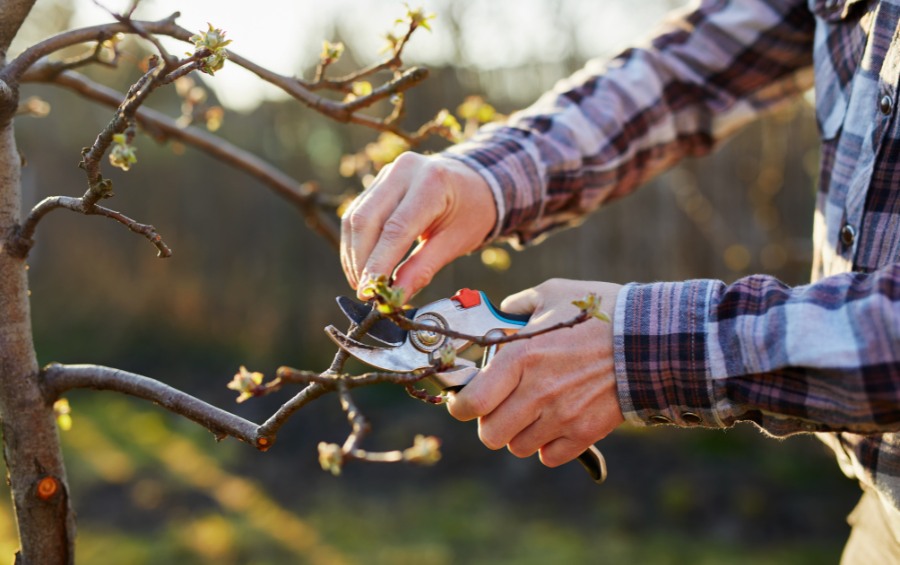
Avoid Overpruning
“One of the most prominent myths around crape myrtles is how much pruning they need. We can’t count how many homeowners have told us they plan to cut back their crape myrtles for better flowering. This is not something we ever recommend, as it harms the tree and won’t typically have the desired effect.” – Daniel Garcia, ISA Certified Arborist at Arbor Masters
The truth of pruning crape myrtles and avoiding “crape murder” is to keep it very light whenever you do it. Most of the time, these trees require no significant pruning. Any trimming you decide to do should focus on helping the tree maintain its natural shape.
Some of the best-looking crape myrtles you’ll see in the Fort Worth area are older specimens that haven’t had much pruning at all. These trees have smaller flower clusters but many more of them, leading to a more beautiful plant than an overpruned crape myrtle.
Overpruning and topping crape myrtles can lead to extensive new growth (water sprouts) that will appear unsightly and have a weak attachment to the tree.
When scheduling pruning, the best time to perform it is late winter or early spring, before new growth appears. Avoid any pruning in the late summer or early fall, as this may encourage new growth that won’t be able to survive winter conditions.
Use Mulch to Protect Crape Myrtle Roots
Mulch has numerous benefits for your crape myrtles, including:
- Lowering the soil temperature during the summer to reduce tree stress in urban environments
- Adding decomposing matter back into the soil
- Preventing soil erosion
- Reducing the amount of water that evaporates from the soil during a heat wave
Try to spread a layer of mulch around your tree’s drip line (the area underneath the canopy). Keep the layer between two and four inches thick and avoid piling mulch around the base of the tree, as this can lead to fungal development and mold growth.
Water Your Crape Myrtles During a Dry Spell
While crape myrtles are more drought-tolerant than many trees once established, they still benefit from supplemental watering during Fort Worth’s intense summer heat. Watering the soil underneath your mature crape myrtle can lead to more vibrant flowers and a healthier tree.
Keep an eye on the weather for any signs that Fort Worth is entering a dry spell or drought (like the 2024 drought). If your trees aren’t getting at least an inch of water per week – including rainfall – it’s time to supplement. Use a soaker hose or irrigation system to apply water slowly and deeply, encouraging strong root growth throughout the soil.
Have a Professional Inspect for Crape Myrtle Bark Scale
Scale insects are a serious threat to many tree species, and crape myrtles are no exception. One of the most common culprits is crape myrtle bark scale (CMBS) – an invasive insect that weakens trees, reduces blooming, and leaves behind unsightly black sooty mold.
The best way to manage CMBS is with a two-step approach:
- Chemical control is most effective in early spring, typically March, when the insects are in their crawler stage and haven’t yet developed their protective coating. Once the scale matures, it becomes much harder to control with insecticides.
- Cultural practices like pruning infested branches, reducing tree stress, and making sure your crape myrtle gets plenty of sunlight all help support your tree’s natural defenses.
If you suspect your crape myrtle has bark scale, it’s best to have a Certified Arborist inspect it and recommend a targeted treatment plan.
Fertilize Your Crape Myrtles Regularly
Fertilization can help your crape myrtle produce better flowers. Before fertilization, we recommend conducting a professional soil test to identify any nutrient deficiencies in the soil. Knowing the soil’s condition will allow you to pick the right fertilizer for their needs.
Have a professional apply fertilizer in the fall just before trees go dormant for the winter. A slow-release fertilizer will nourish the roots through the colder months and help support healthy growth once spring arrives.
WARNING: Overfertilization can damage a crape myrtle’s roots and potentially kill them. Always leave fertilization to professionals if you don’t know how to do it properly.
Prevent Frost Cracks in the Winter
Frost cracks often show up in winter when warm, sunny days are followed by sudden drops in temperature at night. The rapid change causes the outer bark to contract while the inner wood, still warm, expands, creating vertical splits along the trunk. These cracks can stress the tree and leave it vulnerable to pests and disease.
To prevent frost cracks, wrap the trunk with burlap or tree wrap during winter to protect it from direct sunlight and reduce temperature swings. Just remember to remove the wrap once winter ends to avoid trapping moisture.
If your tree already has frost cracks, focus on keeping it healthy and unstressed. Proper watering, mulching, and pruning will help it recover naturally over time.
Frequently Asked Questions About Crape Myrtle Care
With so much confusion and misinformation out there about crape myrtles, we’ve decided to answer some common questions from homeowners to help you understand how to care for these trees properly.
Can I plant a crape myrtle in an urban area with lots of concrete?
Yes, crape myrtles can grow in urban environments, and you’ll often see them thriving near commercial buildings. However, these settings create extra stress due to reflected heat, compacted soil, and limited water availability.
To give your crape myrtle the best chance of success, apply a thick layer of mulch around the base to help regulate soil temperature and retain moisture. Be sure to water deeply and regularly, especially during hot spells, and avoid planting too close to hard surfaces that can intensify heat and limit root growth.
Are crape myrtles an invasive species?
While crape myrtles are not native to our country, there is some debate over whether they are invasive. In general, it is okay to plant crape myrtles, as long as you prevent them from getting out of control and reseeding themselves. They have been in the country since 1786, so we have extensive data on how they function and proliferate in our climate.
How do I choose which crape myrtle variety to plant?
Start by considering how much space you have – mature size is one of the most important factors when selecting a crape myrtle. Many homeowners end up over-pruning (often called “crape murder”) because they planted a variety that grows too large for the space.
Before you buy, look up the mature height and width of the variety you’re considering, and choose one that fits your landscape without needing constant trimming. Crape myrtles come in dwarf, medium, and tall varieties, so there’s almost always an option that will work well for your location.
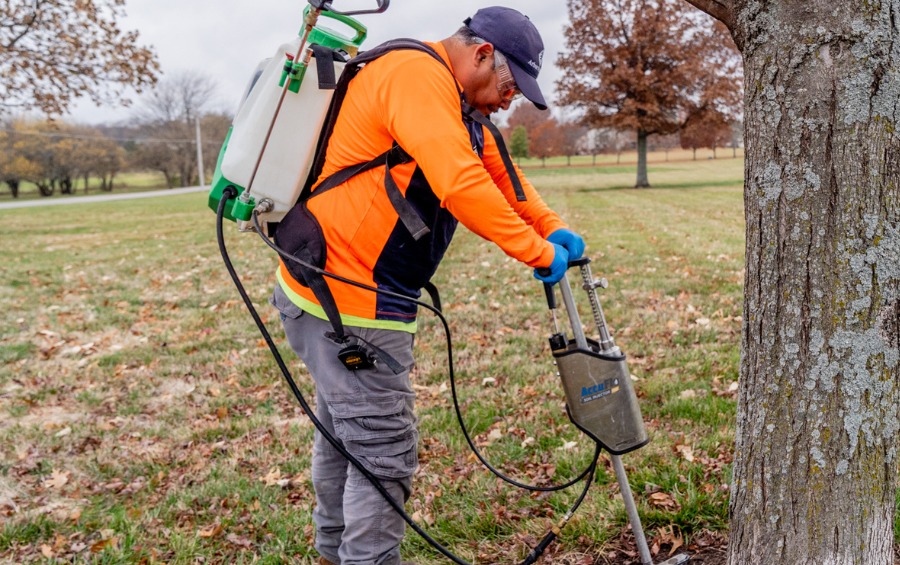
Bring Your Crape Myrtles Back to Life with Help from Arbor Masters
Crape myrtles are a Fort Worth favorite – but without the right care, they’re easily stressed, overpruned, or taken over by pests like bark scale. Whether your tree has been topped, isn’t blooming like it used to, or just needs a professional checkup, the ISA Certified Arborists at Arbor Masters are here to help.
We’ve helped hundreds of Fort Worth homeowners bring their crape myrtles back to life with expert pruning, bark scale treatment, and custom care plans that work with our tough Texas climate.
Call us today at 469-586-5829 or request a quote online for expert crape myrtle care.

Get the latest local news, tree care tips, special offers, and company updates directly to your inbox! It's easy to subscribe and there's no spam - we promise.
"*" indicates required fields

